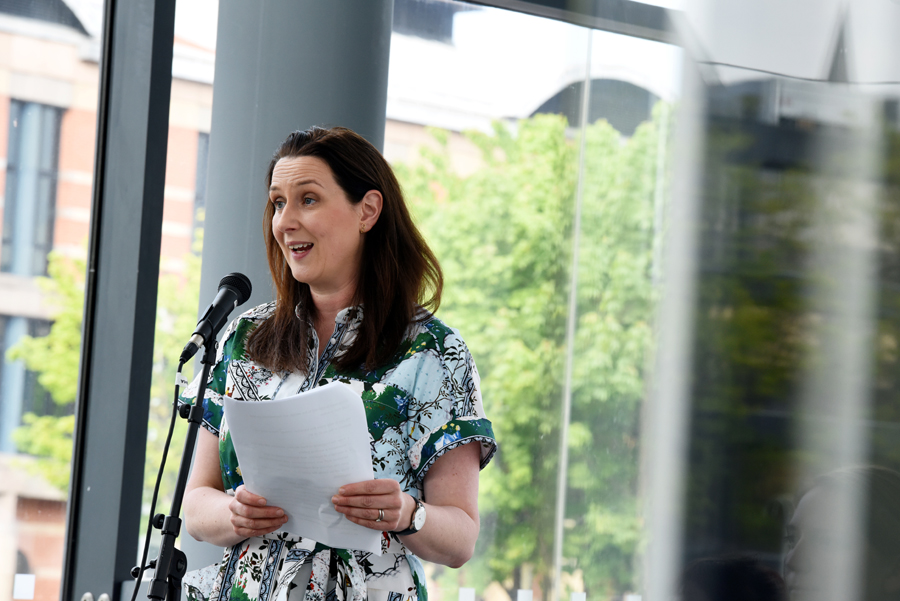Is This the Future of the Art School?
How Middlesbrough Institute of Modern Art’s newly launched School of Art is seeking to promote a more socially engaged educational model
How Middlesbrough Institute of Modern Art’s newly launched School of Art is seeking to promote a more socially engaged educational model

‘I proposed the gallery as a live lab for the university, somewhere we can test out ideas, a safe place where people can connect and meet.’ Laura Sillars, director of Middlesbrough Institute of Modern Art (MIMA), is explaining how she pitched her idea for Teesside University’s new MIMA School of Art. Officially launched last month following its announcement earlier this year, the school is the new home for the university’s BA, MA and PhD fine art students (a total of 101 for 2018-19), previously part of the School of Computing, Media & the Arts. And while, at first, the move might sound like a clever bit of rebranding, capitalizing on the university-run gallery’s profile and international connections to draw in more students, it’s also a genuinely disruptive step. It envisages the gallery as the driving force at the heart, rather than at the periphery, of the school while thinking long and hard in the process about what art education actually should be.
Sillars says the new approach is ‘about bringing to students the best of what an art gallery can do, rather than replicating something that’s wedded to historic practices’. She adds: ‘I’m influenced by the way art galleries work – ideas of temporary autonomous zones and performance spaces, gatherings and moments. I’m interested in what artists do to make work, rather than in analysing what art schools do.’ For Sillars, who joined MIMA from Sheffield’s Site Gallery in 2018, it is also about bringing a real-world, interdisciplinary approach to the art-school environment, reflecting how the gallery already works with the different departments in the university. ‘I want to put that in the hands of our students because that’s what artists do,’ she says. ‘Artists aren’t just interested in being inward looking.’

The significance of a new art school taking its name and pedagogical lead from an art gallery is not lost on Sillars. After all, art education – its role, relevance and use both to artists and wider society – is under increasing scrutiny, not least from artists themselves. When a three-year undergraduate course in the UK can cost upwards of GB£50,000 in fees and living expenses and, according to the Livelihoods of Visual Artists report, UK artists on average earn just over GB£6,000 per year from their practice, it’s little wonder that many are asking if a fine art degree is money well spent. We may be celebrating 100 years since the creation of the Bauhaus, but the 21st-century art school would seem to be in the midst of an existential crisis.
Of course, as the combined hurdles of art-school expenses and the precarity of an artistic career conspire to exclude many less well-off students, alternative art-education models have sprung up. Initiatives such as Open School East in Margate, the Islington Mill Art Academy in Salford and the Eastside Projects and Wysing Arts Centre-instigated Syllabus, which styles itself as a ‘collaboratively produced alternative learning programme’, have all, in different ways, offered a challenge to the established university sector. Sillars is acutely aware of the MIMA school arriving in this context but, while she talks of the need for greater diversity in art education, it’s also clear that the new school is as much about reenvisaging the role of the public art gallery as it is shaking up higher education. ‘We are having to rethink our civic landscape,’ she says. ‘Both art galleries and universities have huge opportunities and mutually beneficial ways of working. They have a really interesting role to play.’

For MIMA, since Teesside University took over the running of the gallery building from the local council in 2014, that interesting role has been defined in terms of making a tangible and significant contribution to the city of Middlesbrough – of being a ‘useful’ museum (as previous director Alistair Hudson put it), shaped by its users rather than the other way round. Sillars plans to bring this approach and more to the art school. ‘We will, of course, train people to be artists, but we will also look at all the things MIMA has done around the public realm, civic engagement and activism, around rethinking curatorial models, around the site-specific aspects of a collection and the political engagement in that, around constituents and the constituent museum.’
While specific to MIMA, Sillars’s thinking clearly has a much wider significance, and perhaps points to a way forward for a more socially engaged, contemporary art school model, joining the dots between artists, education and the gallery. It is, she says, about ‘nurturing the internal world of those artists but enabling them to see the external world, and perhaps enabling them to move more seamlessly from art school into the world’. Crucially, it proposes a possible future where the boundaries between art pedagogy and the gallery are blurred to the point that it’s hard to see the join.
Main image: MIMA and School of Art staff at Middlesbrough Institute of Modern Art, 2019. Courtesy: Teesside University, Middlesbrough























